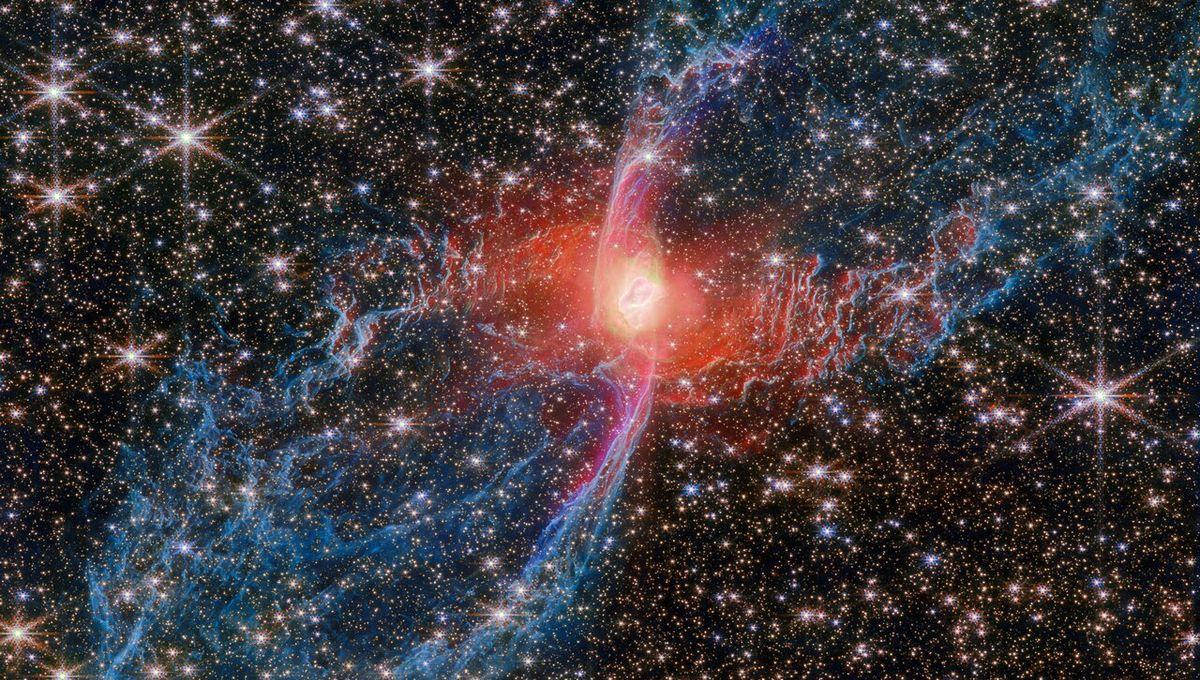Stars like our Sun turn into red giants as they run out of hydrogen to fuse at their core. As the star continues to age, it will blow out its outer layers until the only thing that remains is an exposed core, a white dwarf. Before getting to the white dwarf state, Sun-sized stars can form beautiful nebulae, and among the most stunning is the Red Spider nebula.
The rest of this article is behind a paywall. Please sign in or subscribe to access the full content. The Red Spider nebula is located about 3,000 light-years away in the constellation of Sagittarius. In optical light, the nebula shines in reddish light as the name suggests, with its central star showing off in blue. In infrared light, the domain of JWST, we see much more of the structure of this object, with the tenuous gas filaments it has released shining in blue and the central region shining in red. The Red Spider Nebula as seen by Hubble in visible light. Image Credit: ESA & Garrelt Mellema (Leiden University, the Netherlands) The incredible capabilities of JWST have revealed so much more about the central star that we have been able to decode with Hubble and other telescopes. It has revealed hot dust surrounding the central star, and this hot dust is likely in the shape of a disk. Gas is also jetting out from the center of the nebula, which was a main motivation for this object to be studied by the JWST. The observations also reveal a peculiar formation, really close to the star, and it might indicate that the star is not alone. Scientists suspect the presence of an invisible companion star – invisible to our current instruments at least. The gravity of this unknown partner might have shaped the whole structure of the nebula. The glorious infrared view of the Red Spider Nebula. Image Credit: ESA/Webb, NASA & CSA, J. H. Kastner (Rochester Institute of Technology) This new image from JWST also reveals for the first time the full extent of the nebula's lobes, or the spider's "legs", seen here in blue. These lobes are traced by the light emitted from molecular hydrogen and are bubbles that have been released by the dying star thousands of years ago, each extending around three light-years. These observations by JWST will be combined with data from the X-ray observatory Chandra to better understand the formation of bipolar planetary nebulae such as this one. 







